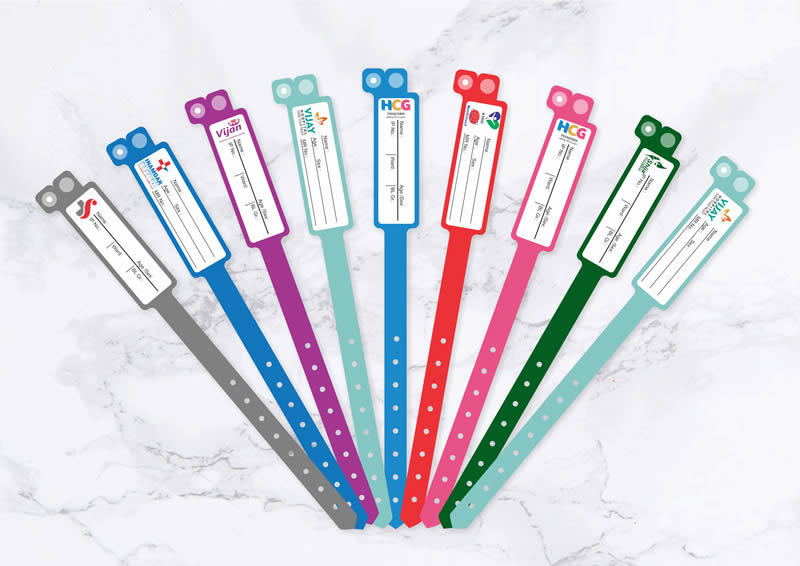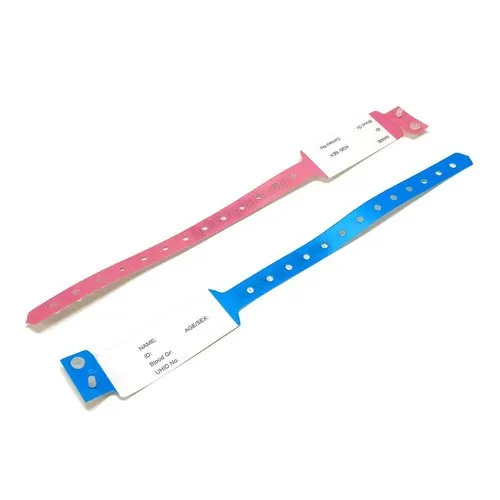Exploring the Advantages of a Patient Identification Band in Preventing Medical Errors
Exploring the Advantages of a Patient Identification Band in Preventing Medical Errors
Blog Article
Discovering the Numerous Kinds Of Patient Identification Band Made Use Of in Clinical Facilities
In the detailed globe of medical care, the crucial duty of Patient Identification bands often goes unnoticed. These bands, differing from easy paper wristbands to advanced RFID bands, create the foundation of Patient safety methods, ensuring precision in Patient Identification. Yet, the large variety of these bands, each with its special benefits and restrictions, is commonly neglected. As we navigate with this topic, one might acquire insight right into the subtle intricacies and crucial relevance of such bands in medical centers.
Recognizing the Importance of Patient Identification Bands
While they may feel like mere accessories, Patient Identification bands play a crucial duty in medical centers. These bands function as a vital device for confirming Patient identification, preventing medical mistakes related to misidentification. The bands normally present necessary info such as the Patient's name, age, blood kind, and any type of well-known allergies. They allow medical care professionals to rapidly access this important info, thus helping with precise and prompt clinical therapy. Patient Identification bands also aid in streamlining administrative tasks, guaranteeing accurate record-keeping and billing. Despite their simplicity, these bands embody the principle of Patient safety and security, a keystone of top quality wellness treatment. Without them, the danger of clinical errors, and consequently, Patient harm, could significantly increase.
Typical Paper Wristbands: Their Usage and Limitations
Standard paper wristbands have actually been a staple in Patient Identification throughout various clinical facilities. While their use is prevalent, they harbor certain constraints that may influence their efficiency in Patient monitoring. This section will certainly concentrate on the scope of their application and the integral downsides related to their use.
Paper Wristbands: Use Range
In the realm of Patient Identification, paper wristbands have actually long held a critical function. These bands are generally used in outpatient setups, where the Patient's keep is short-term. The wristbands have necessary info such as the Patient's name, date of birth, and an one-of-a-kind Identification number. This basic, yet reliable system, permits medical experts to swiftly and accurately recognize clients, guaranteeing the right treatment is provided. Paper wristbands are also made use of in emergency situation circumstances, where rapid Identification is vital. Their usage prolongs to occasions like blood contribution drives and mass vaccination programs, even more highlighting their adaptability. In spite of advancements in innovation, the modest paper wristband stays a trusted and cost-efficient solution for Patient Identification in numerous medical care situations.
Limitations of Paper Wristbands
In spite of their extensive usage, paper wristbands are not without their downsides. Their physical durability is just one of the substantial limitations. Direct exposure to water, sweat, or misuse can provide them unreadable and even create them to break down. In enhancement, paper wristbands usually do not have the technical capabilities of more modern-day options, such as barcoding or RFID chips, restricting their functionality to simply showing composed information. The lack of ability to upgrade or customize the data on the wristband is another imperfection. If the info is handwritten, readability can be jeopardized, leading to potential misidentification. Paper wristbands can create pain or skin inflammation to some patients, particularly when used for prolonged periods.
Barcoded Wristbands: Improvements in Patient Identification
While Patient Identification has long been a crucial facet of healthcare, the arrival of barcoded wristbands represents a substantial leap ahead. These bands utilize the simplicity of barcoding modern technology, enabling Patient details to be quickly checked and accessed. They boost the speed and accuracy of Patient Identification, decreasing the threat of medical errors associated with misidentification. Barcoded wristbands are cost-effective, simple to produce, and get rid of handwriting errors usual with hand-operated systems. They are not without constraints. While they provide renovations over conventional bands, the barcode can end up being used or smudged, providing it unreadable. web link Despite this, barcoded wristbands remain a necessary device in modern-day healthcare settings, symbolizing the crossway of innovation and Patient care.
Superhigh Frequency Identification (RFID) Bands: a Step Towards Futuristic Health Care
The development of Patient Identification bands has brought regarding the appearance of Superhigh frequency Identification (RFID) Bands (patient identification band). These cutting-edge tools existing crucial benefits for medical care centers, supplying a more effective and technically advanced ways of Patient Identification. The application of RFID in healthcare is a considerable step in the direction of a much more futuristic approach to Patient administration and safety
Recognizing RFID Bands

RFID Bands: Key Benefits
Largely, these bands improve Patient security by supplying exact, instantaneous Identification, thus minimizing clinical mistakes. RFID bands can store a vast amount of Patient information, consisting of clinical background and allergies, enabling customized care. Generally, RFID bands stand for a substantial innovation in Patient Identification modern technology, profiting both patients and healthcare service providers.
Executing RFID in Health Care
These bands supply a seamless method to track and recognize patients, ensuring their security and improving efficiency in therapy procedures. RFID bands reduce medical mistakes by providing accurate Patient Identification, which is critical in stopping misdiagnosis or incorrect medication administration. Hence, the implementation of RFID bands is a considerable action towards enhancing Patient safety and health care distribution.

Color-Coded Wristbands: Helping in Quick and Accurate Medical Diagnosis
In the busy atmosphere of a clinical facility, color-coded wristbands have actually become crucial tools for swift and precise Identification of an individual's medical condition. These wristbands, put on by individuals, bring specific shades that match to different clinical problems or conditions. Red might indicate allergic reaction dangers, while yellow might indicate an autumn risk. This system is designed to supply instant visual signs to doctor, improving Patient safety and security and care high quality. In emergency scenarios, using these wristbands enables quick decision-making. The performance of color-coded wristbands depends on the uniformity of color analysis throughout healthcare establishments, calling for typical requirements for consistent application.
Strategies for Efficient Execution and Management of Patient ID Bands
Accomplishing optimal usage of Patient Identification bands requires a well-structured method for their implementation and monitoring. Patient education is also critical; individuals must recognize the purpose of the bands and the demand for try this website their continuous wear. It's necessary to have a backup strategy in place, such as barcode scanning or biometrics, to make certain that Patient Identification is never ever compromised.
Verdict
Patient Identification bands are vital in clinical centers to guarantee safety and security and accuracy. Efficient implementation and administration of these bands can dramatically minimize clinical errors, increase effectiveness, and boost total Patient care.
These bands, differing from simple paper wristbands to sophisticated RFID bands, create the backbone of Patient safety methods, ensuring precision in Patient Identification.The development of Patient Identification bands has actually brought about the introduction of Radio Regularity Identification (RFID) Bands. In general, RFID bands stand for a substantial development in Patient Identification modern technology, benefiting both individuals and health care providers.
RFID bands decrease medical errors by offering precise Patient Identification, which is crucial in avoiding misdiagnosis or incorrect medicine management. Patient education and learning is also important; patients need to understand the purpose of the bands and the demand for their constant wear.
Report this page